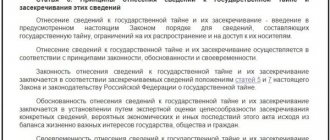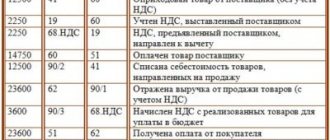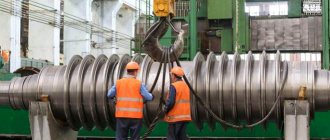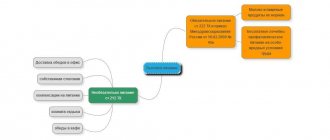There are different professions. Not everyone expects to be in a warm office or on the streets of big cities. There are a number of specialties associated with working in conditions that are far from comfortable. In addition, after finishing work, it will not be possible to return to a cozy home, family and normal life. Those who leave home for a long time due to work need somewhere to sleep, eat, and provide for daily needs. The employer will have to somehow compensate for such costs and inconveniences. The legislative method of such compensation is called the assignment of field allowance.
We will tell you how the amount of field allowance is calculated and on what it depends, how its norms have changed since 2020, as well as the features of its taxation.
What is field allowance
The phrase “field allowance” is used to express a certain compensation to employees for their work in the field or work related to being on expeditions, a kind of analogue of daily allowances paid to posted workers. These could be professions:
- surveyor;
- geologist;
- archaeologist;
- forwarder, etc.
Meanwhile, the key concept of “field conditions” is not disclosed in the law. Labor Code in Art. 168.1 stipulates only the need to pay funds to reimburse a certain share of the expenses of such workers.
REFERENCE! More than 10 years ago, the concept of field conditions and field allowances was disclosed in the “Regulations on the payment of field allowances to employees of geological exploration and topographic and geodetic enterprises, organizations and institutions of the Russian Federation engaged in geological exploration and topographic and geodetic work,” approved by the Resolution of the Ministry Labor of the Russian Federation No. 56 of July 15, 1994, now no longer in force.
The concept of field conditions can be deciphered based on the data given in the legislation. Let's consider their main criteria:
- The main feature of field work is that it is carried out outside the permanent residence of the personnel.
- The duration of such work is the field season, that is, the period specified for completing tasks (may differ for different professions). So, geologists can work in the field for six months or even more, an expedition can last more than one month, etc.
- Working and living conditions are not initially provided; this is done by the employees themselves.
- The permanent location of the personnel is located outside of large populated areas.
- Typically, employees travel on official business, which cannot be recognized as business trips from the point of view of labor law.
IMPORTANT! These criteria are conditional, their list is open, enterprises are allowed to approve it independently in accordance with their own needs, reflecting it in their internal accounting policies.
Field working conditions are – PravoDiskurs
At the moment, difficult working conditions are not regulated by law, and the direct severity of the work performed can only serve as a reason and factor determining the danger or harmfulness of certain work duties performed by an employee in accordance with his employment contract.
Therefore, harmful, dangerous and difficult working conditions should be distinguished. In general, the severity of the work performed at the moment is a criterion for the subsequent assessment of such working conditions as harmful or even dangerous.
In this case, the severity of labor means the totality of physical stress on the body received during the performance of work activities.
Thus, any hard work outside the established standards is harmful or dangerous, but not all harmful or dangerous work will be hard at the same time.
1. Criteria and standards for the severity of work 2. List of heavy work in which it is unacceptable to use female labor or the labor of minors 3. Hard work and pregnancy - how the issue is resolved 4. How are difficult or harmful working conditions determined 5. Compensation for harmful working conditions
Based on this fact, there is a certain number of legal conflicts.
There are lists of positions with hard work, which for this reason cannot be held by women or minors, and, at the same time, according to the certification of jobs, such positions do not involve harmful or increased danger of work, and therefore - corresponding additional payments and additional social guarantees for employee.
Criteria and standards of labor severity
We recommend reading: Injury at work: consequences, what to do in the event of an accident, guarantees and compensation
Determining how hard the work is lies entirely on the shoulders of the certification commission at the enterprise, which is obliged to certify workplaces to assess working conditions at least once every five years. At the conclusion of the certification, certain positions may be recognized as harmful or dangerous for the following reasons:
- Amount of cargo carried per work shift;
- Maximum weight of carried loads;
- Number of episodes of heavy lifting during a shift;
- The employee's position in the workplace;
- The employee’s posture during the performance of work duties and the frequency of its change;
- Static load during operation;
- The number of movements in space during labor.
Thus, hard work is not always necessarily associated directly with carrying a load. For example, work on a conveyor belt may be considered hard work due to standing during the entire shift, or even sedentary work that involves frequent bending of the body.
In this case, severity criteria may be different for different age and gender categories of persons. For example, separate cargo standards are established for women or minor employees.
List of heavy work in which it is unacceptable to use female labor or the labor of minors
The general lists of work in which women or minors cannot be involved vary and include not only hard work, but also work that has an increased health hazard due to other negative factors, such as chemical, physical or biological. Moreover, even intellectual or social work can be considered harmful to health, implying that the employee is in a state of increased stress in an emotional or intellectual sense, or vice versa - having a high level of monotony and monotony. In general, the legislation has adopted separate lists of heavy and harmful work with a full indication of professions that are impossible for women or minors, such as, for example, work in the following industries:
- Mining and work involving underground work;
- Certain professions when working in engineering, steel and similar heavy industries;
- Certain positions at chemical, biological and similar enterprises;
- Some activities in nuclear energy;
- Agrochemical services using certain substances, etc.
Hard work and pregnancy - how to resolve the issue
If an employee was employed in a position that is considered unhealthy, but acceptable for women, in the event of pregnancy she can engage exclusively in activities that fall within the acceptable class of working conditions with the possibility of moving at will to a position with optimal conditions at her request.
In the absence of vacancies that provide for the absence of harmful working conditions, in accordance with the provisions of Art.
254 of the Labor Code of the Russian Federation, the employer is obliged to relieve his pregnant employee from performing her job duties until such a position appears for the entire duration of pregnancy, leave for her and maternity leave, while maintaining the full amount of her average earnings for the days of such absences.
How are difficult or harmful working conditions determined?
The need to determine any working conditions as difficult or harmful lies with the certification commission. Also, a conclusion about harmful working conditions can be revealed by an employee’s appeal to the labor inspectorate.
https://youtu.be/GpXuOccRvUo
For employees in positions with harmful, difficult or dangerous working conditions, the fact of the presence of such conditions must be reflected in the employment contract or additional agreements thereto.
An important fact: the employer does not have the right to arbitrarily change working conditions to more difficult or harmful ones.
If the certification commission establishes the existence of such conditions, the employer will be obliged to pay employees all compensation due and provide them with appropriate guarantees, as well as provide them with the opportunity to move to another vacant position while maintaining their average earnings.
The certification commission can make conclusions on various classes of working conditions, which may be as follows:
- Optimal - work under standard conditions without any restrictions and with the maximum possible minimization of the influence of harmful factors. They are not subject to additional guarantees or compensation.
- Acceptable - work within the limits established by law, but without minimizing the impact of harmful factors. They are not subject to additional guarantees or compensation.
- Harmful – work, long-term performance of which can lead to reversible or irreversible consequences for the worker’s health. Employees must be provided with additional compensation and social guarantees. They are divided into four gradations of harmfulness.
- Hazardous – work that may not cause permanent harm to the health of the employee, but at the same time may be associated with increased danger due to the nature of the activity and emergency situations. It is mandatory to provide workers with guarantees and compensation.
Compensation for harmful working conditions
We recommend reading: How is pay for hazardous working conditions calculated?
The presence of difficult, harmful or dangerous working conditions requires that the employee be provided with additional social guarantees. At the same time, the number of benefits and guarantees provided depends on the final classification of the harmfulness of working conditions. In general, possible guarantees include:
- An increase of at least 4% compared to the salary of a similar position without taking into account harmful working conditions. This premium is mandatory for all hazard classes;
- Ensuring a 36-hour work week does not apply to employees whose working conditions correspond to hazard class 3.1 or 3.2.
- Additional paid leave of at least 7 days per year does not apply to hazard class 3.1.
In addition, the employer is also required to pay compensation for temporary or permanent loss of ability to work due to harmful or dangerous working conditions.
(442 voice., 4,53
Source: https://pravo-dk.online/polevye-uslovija-truda-jeto.html
What are the regulations for field work?
From a legal point of view, field work represents special working conditions. This circumstance must certainly be reflected when concluding an employment relationship, that is, it must be written down in the employment contract. It should be noted that the working conditions are field and the procedure for calculating and paying this compensation should be provided.
The employer can also initiate, along with the employment contract, the signing of an agreement on additional working conditions, including field work. It is also possible to issue special Regulations on field work.
In addition to the employment contract, documents that can confirm the fact of field work or its expeditionary nature in the event of a labor dispute or going to court, that is, from a legal point of view, are:
- collective agreement;
- management order to send an employee or group to work under specified conditions;
- timesheets for such employees;
- employee's report on expedition or field work, etc.
IMPORTANT INFORMATION! In the employment contract or Regulations on field pay, the employer should provide and approve a list of documents confirming the field working conditions of personnel.
New rules for taxation of personal income tax on field allowances.
clause 3
“Income not subject to taxation (exempt from taxation)”
(“Income tax for individuals”) has been supplemented with a new paragraph, according to which, from January 1, 2020, when an employer pays field allowance to employees working in the field, an amount exceeding 700 rubles. for each day spent in the field, is subject to personal income tax.
Let us remind you that for employees working in the field, the employer is obliged to reimburse the following related to business trips: - travel expenses; - expenses for renting living quarters; - additional expenses associated with living outside the place of permanent residence (field allowance); - other expenses incurred by employees with the permission or knowledge of the employer.
At the moment, amounts of paid field allowance are exempt from personal income tax in full on the basis of clause 3. Let us recall that according to para.
1 of the above paragraph, the exemption applies to all types of compensation payments established by the legislation of the Russian Federation, legislative acts of the constituent entities of the Russian Federation, decisions of representative bodies of local self-government, within the established norms related to the performance of labor duties by an individual. And since no restrictive norms were established regarding the amounts of field allowance, they were not subject to personal income tax in full (). Since January 1, 2020, such a restriction has been established.
Starting next year, the same rules will apply to field allowance amounts as for the payment of daily allowances when sending workers on a business trip across the territory of the Russian Federation (remember that they are subject to personal income tax on amounts exceeding 700 rubles). It is worth noting that daily allowances paid when sent on a business trip are also standardized for the purpose of calculating insurance premiums.
It is worth noting that daily allowances paid when sent on a business trip are also standardized for the purpose of calculating insurance premiums.
There is no such standard for field allowances yet.
Egorova A. O., expert of the information and reference system “Ayudar Info” Friend’s name * Email * Comment
Increase in monetary allowance from 1.10. 2020: average “temperature” - 1242
<.> usually from 17 to 25 [thousand rubles per month, the salary of an ordinary contract soldier is mine].</.>
But the people don’t care. Everyone thinks that the military gets DD through the roof. After 20 years of service, they retire and receive a pension of 30 thousand rubles, and they do not care that only a few receive such a pension, that the majority receive a maximum of 15 thousand<.>/Timur Garifullin/ Yesterday in my diary, comrades shared the news that the Ministry of Defense Russia posted on the federal portal of regulatory legal acts the order of the Ministry of Defense of the Russian Federation “On approval of the Procedure for providing monetary allowances to military personnel.”
This order will replace Serdyukov’s from December 2011: Order No. 2700
“On approval of the Procedure for providing monetary allowances to military personnel of the Armed Forces of the Russian Federation”
. The new draft order specifies official salaries taking into account the indexation of military pay by 4.3% from October 1, 2019. Most likely, the order will come into effect on October 1, 2019. I looked at the increase in pay for military personnel at the battalion level (new salary amounts for military personnel are highlighted in bold.1.
Machine gunner, sniper, salary according to military position (OVD), 2nd tariff category: - 11,440 rubles.
— 11,932 rub. Salary according to military rank (OVZ), private: 5200 rubles - 5424 rubles. Total increase in salary: 716 rubles.2. Commander of the internal affairs department, 5 tr: 15,600 rubles. — 16,271 rub. OVZ, sergeant: 6760 rub. — 7051 rubles. Total increase in DD: 962 rubles. 3. Company sergeant major, police department 9 tr: 18,720 rubles - 19,525 rubles. OVZ, senior warrant officer: 8840 rubles - 9221 rubles. Total increase in DD: 1186 rubles. 4.
OVZ, senior warrant officer: 8840 rubles - 9221 rubles. Total increase in DD: 1186 rubles. 4.
Platoon commander of internal affairs department 10 tr: 20,800 rubles - 21,695 rubles. OVZ, lieutenant: 10,400 rubles - 10,848 rubles. Total increase in DD: 1343 rubles.5.
Company commander, Department of Internal Affairs 14 tr: 22,880 rubles.
— 23,864 rub. HOV captain: 11,440 rubles - 11,932 rubles. Total increase in DD: 1476 rubles.6. Commander of the OVD battalion 18 tr: 24,960 rubles. — 26,034 rub. OVZ lieutenant colonel: 12,480 rubles - 13,017 rubles. Total increase in DD: 1611 rubles. On average, we consider an increase in DD. How do statisticians calculate? The first and last digits are removed.
How do statisticians calculate? The first and last digits are removed. In our case: an addition to the machine gunner’s and battalion commander’s DD.
And the average amount of indexation at the battalion level, per bare DD, has been 1,242 rubles since October 1.
We recommend reading: System of state support for small businesses
But this amount is not final. After all, there are still a lot of percentage increases on salary for military positions.
I counted 11 (eleven) allowances. But there are probably more premiums. Including the main ones: For length of service up to 40%; for class up to 30% of the ATS; for secrecy up to 65% of the Department of Internal Affairs; monthly bonuses, regional coefficient, etc. Including for physical assistance up to 70% of the Department of Internal Affairs.Itozhu.
The amount will end up being different for each service member, depending on what each service member has served.
I will add that the order contains tariff categories for military personnel undergoing conscription military service. From the shooter 1 tr. with 1085 rubles and up to the sergeant major of the company 9 tr.
from 1995 rubles [cadets of higher educational institutions and warrant officer schools who did not undergo military service before entering into a contract are paid 3tr - 1302 rubles]. As far as I know, conscripts currently receive a fixed salary of 2,000 rubles, regardless of rank and position.
As far as I know, conscripts currently receive a fixed salary of 2,000 rubles, regardless of rank and position.
It is still unclear what will happen now. By the way, I have not yet seen a significant increase in the salary of military personnel under contract of 1-4 tariff categories, announced by Defense Minister Sergei Shoigu from September 1, 2020. Although one contract soldier I know with 6 years of military service, holding a position of the 2nd tariff category, boasted that now he will receive at the level of the 4th category and the addition to his salary from September 1 will be 3.8 thousand rubles. Such is the news of army money.
For military pensioners, from October 1, 2019, a military pension increased by 6.3% will be added to their cards.
=======Like or dislike a publication, press the right thumb up or down, share with friends and subscribe to the channel.
The government proposed to resolve the issue of compensation due when working on expeditions
Photo: Vladimir Smirnov/TASS Field payments, the amount of which exceeds 700 rubles per day, may soon be subject to personal income tax. According to the bill, which the Government prepared and submitted to the State Duma, the limit will be established by analogy with the daily allowance paid on business trips around Russia. The Cabinet of Ministers is confident that the measure will help balance regional budgets, although deputies are still wary of the initiative.
Which employers must pay field pay?
Until 2009, when the above-mentioned Regulation No. 56 lost force, field allowance could only be accrued to a narrow professional circle engaged in geological exploration or topographic and geodetic activities.
Since July 17, 2009, the repeal of this Regulation has extended the requirement of the Labor Code regarding the payment of field benefits to all types of activities if they fall under the criteria of the field nature of the work, which is recorded in the title documents (primarily the employment contract).
Internal field allowance standards
Focusing on a certain amount of these payments, the company develops its own (“internal”) standards. They are introduced in order to adequately determine the amount of expenses taken into account for tax purposes. If the amounts fall within the established standards, these costs are subject to the following restrictions from the point of view of tax authorities:
- this amount will reduce the taxable profit of the enterprise;
- there is no tax on personal income;
- the unified social tax is not valid for her (even if the amount is not included in the norms);
- from this amount you do not need to pay contributions to social funds (clause 2, clause 1, article 422 of the Tax Code of the Russian Federation).
The rate is accrued for each day of stay in the field. Previously, Resolution No. 56, abolished in 2009, required that the amount of field allowance be set as a multiple of the daily allowance for seconded employees. Today this requirement is not mandatory.
Field allowance standards can be fixed in different ways:
- in a fixed amount, the same for all employees;
- differentiated, depending on climatic and other working conditions, as well as the labor functions themselves.
FOR YOUR INFORMATION! The more correctly justified the norms for field allowances are, the lower the risk of attention from the tax authorities.
A field exit is the departure of a unit from its place of permanent deployment to the field. Field conditions are conditions that are as close as possible to the military in terms of lifestyle: a camp is set up, a field kitchen is being built, defensive structures are being dug around the camp, soldiers live with and use their equipment, and perform tasks for which they are trained in accordance with military specialization. Units with specializations for which the field exit is calculated usually go to the field exit. For example, if the exit is for engineering troops, then engineering units leave, say, a regiment - a sapper company. All units of the same type live in a common camp, divided into residential sectors. In general, however, different types of troops usually go out to the field, living and training separately, gathering together only for the outcome of the field trip - exercises. The exercises in relation to the entire duration of the exit act as a resultant part, a kind of exam.
I would especially like to draw attention to the difference between the concepts of “training” and “field exit”. When the media talk about the exercises, they lose sight of the part of the field exit that precedes them. Ground forces exercises culminate with a field exit, during which units move into the area, set up camp and prepare for the exercises, and simply wait for them to begin. The pre-exercise portion of the field trip may be longer than the exercise itself. Moreover, not even all exercises, which can last from several days to several weeks, are usually captured by the media. They record only the “indicative”, resulting part, designed as a show for the command and the media and at the same time as an exam for the units involved.
A field exit for a unit consists of performing the following tasks: first, performing various works according to the type of activity of the unit; secondly, training of personnel to work with equipment and combat; thirdly, preparation of upcoming exercises - digging fortifications, fine-tuning equipment; and, finally, participation in the exercises themselves.
Nowadays, these problems of field access are solved in a poor form. Interests in education and training of personnel are reduced to nothing; the solution of personal issues, such as promotion, improving one’s social status, and providing rest for management officers, is absolutely dominant. Not enough money is allocated, which is barely enough for fuel; There is generally a minimum amount of ammunition - more for demonstration than for training. Those funds that are nevertheless allocated are stolen: with the fuel saved from the output, officers busy with supplies buy cars and apartments after the exercises. The organization also leaves much to be desired. Instead of training, fighters do unnecessary work, everyday routine, and waste time. The intellectual level of organization of the educational process and exercises has fallen almost to zero. At the same time, everyone is puzzled by something, they run back and forth, no one can be found in the camp during the day, but all the fuss is meaningless: the army at the field exit works the same way as in normal conditions, i.e. mainly for their own self-preservation.
It cannot be said, however, that the field exit is completely meaningless. He accustoms soldiers to life in the field, i.e. endure difficulties, hardships, survive without any everyday amenities. In the fields, people become friends, units learn to interact and act as a single whole.
The field conditions for officers are much worse compared to their usual living conditions. It is harder for them than for the soldiers, because they have to get used to the delights of barracks life (they live here with the soldiers). But the officers, as usual, stick together, and nature encourages drinking.
At the same time, it cannot be said that officers at the field exit get a lot of rest. Living together with the personnel gives rise to constant hassle, and commanding and organizing the daily activities of subordinates is very hard work. In addition, you have to carry out orders from the command - equip the camp, carry out tasks related to exercises and the educational process. Moreover, to carry out really means to lead subordinates to organize them to perform a certain task.
For soldiers, going out into the field is a blessing. They take a break from the many conventions of army life. This is quite natural, given that in a situation close to combat, when people, in the absence of everyday amenities, urgently perform pseudo-combat tasks, there is no time for stupid conventions. A soldier can loosen up his appearance, relations with officers acquire a familiar character and, in any case, become simpler. The relationships between young people and old-timers are becoming more humane. The latter are no longer able to completely avoid work due to the proximity of the officers and the green melancholy without work, and they become simpler in their relationships with others. Moreover, it is easier for officers in the field to maintain discipline due to the remoteness of the prosecutor’s office, and therefore control over beatings. You can always reach an agreement with your doctor.
At the field exit, soldiers can both have a good rest and work well (in the sense of soul, with humane communication). Moreover, to take a break not only from army regulations in the form of regulations and hazing, but also in the most literal sense: to get enough sleep in nature during the working day with everyone else, to disappear from the camp in its vicinity, or simply to sleep normally at night. Let it be on bunks, back to back and side by side, but at least fully, the whole night. In the barracks, it is not always possible to sleep like this because of hazing or regulations, but here there are no night awakenings (“explosions”) - the old-timers themselves are very tired (they do not manage to get enough sleep during the day in order to fool around at night). There is also not much daily work to restore order and care for old-timers. It is almost impossible to get money, cigarettes and food for them, since there is simply nowhere.
During regulations, they blow up people at night to punish for daytime sins. But here officers get no less tired than others, so cases of night explosions are extremely rare.
So young soldiers can either take a break from hazing and regulations, or just sleep peacefully. Nature also encourages sleep, especially in the heat. In the fresh air you get enough sleep faster, but it’s also easier to fall asleep, even if you’ve already had enough sleep. Often officers also abuse this: they are people too.
Field exit is something of a trait for soldiers. Moreover, it usually marks the end of the next six months. Often, therefore, it is at the field exit that transfers from one category of hazing to another occur (from spirit to elephant, etc.). It was after returning from a field trip that my grandfather allowed me to hem my jacket with a thick hem, and not with a thin piece of fabric (which in the army is called a “gondonchik”), which is a sign of a higher status. I was thereby accepted into the team as one of their own, with the right to even say something.
In general, a field exit in our time does not perform all the tasks for which it is designed. He, of course, accustoms them to field life, preparing soldiers for a possible war, but he does not train them to teach. A field trip gives soldiers the opportunity to take a break from regulations and hazing and to be in nature. It opens up the shortest path for senior officers to raise and improve their personal position on the social ladder, provides rest and the opportunity to earn extra money by writing off fuel, weapons, spare parts for cars, and food. He is an organic part of army life.
When assessing field activities and exercises, one must also keep in mind their role in maintaining the tone of the army, discipline and responsibility. From this point of view, the issue of training personnel during exercises turns out to be a secondary issue. The Russian army of the 90s was largely ossified precisely due to the lack of real exercises (but, of course, not only them). The fact is that exercises and field trips make commanders run wild, and commanders at all levels: from sergeants to generals. They are forced to resolve all issues in an emergency manner; in military terms, these are primarily organizational issues of a fateful nature for the exercises. And the fate, promotions, and awards of many commanders depend on the success of the exercises, on which unit and how it performs in them. This moment forces everyone to fuss and run. Almost like in a battle or during its preparation. At the same time, the supply of equipment to the army, its redistribution among the troops (between warehouses of different levels and to the final consumer units), and the coordination of military supplies are being worked out. Although the exercises primarily use supplies from army warehouses that have already been supplied to the army earlier, their internal redistribution occurs.
And we must admit that in terms of maintaining the tone of the army, discipline and responsibility, the role of exercises is enormous, and it is realized by the very fact of conducting the exercises. Issues of theft of material resources in this case, of course, are important, as well as the quality of planning and organization of conditional training operations, but as a consequence and background to the very fact of the exercises, which in itself unites scattered military units into a single structure through the organizational bustle of commanders.
Even during the exercises, the techniques of command, coordination and making team decisions are practiced. Command officers are forced to prepare maps, work out the unit's reaction to a particular command from above, and constantly interact with higher command. Commanders of individual battalions, regiments and divisions attend meetings at any time of the day or night and spend a huge amount of time on them. So, if the lower command level and soldiers learn little during field trips and exercises, then middle and senior command officers receive good training in any case. In special forces and in training units, exercises always mean real preparation and training for everyone.
Features of payment of field allowances
The special nature of field work also dictates the nuances of compensation payments. For example, before leaving and starting work, it is impossible to predict with accuracy how much the compensated expenses will result in. Meanwhile, the funds must be in the hands of employees before the start of work, since many calculations will need to be made in advance. The solution was found in using the mechanism of giving funds “on account”:
- the employee writes an application in any form for a certain amount of cash to be issued to him as field allowance;
- the manager endorses the application, separately noting the amount, issuance period and payment date;
- after the expiration of the period specified in the application (this will be after the end of the field season), within 3 days the employee must submit an advance report for the funds received and documents confirming the costs to the accounting department or management.
IMPORTANT! Being compensation, payment of field allowance is not included in the employee’s salary. From an accounting point of view, these are expenses for ordinary activities.
How is it paid in 2020
Payment of field allowances is carried out in accordance with the Regulations adopted by the organization.
The document must contain a description of work that involves poor work and living conditions, as well as the location of production facilities outside the populated area.
The employer must pay wages for each day spent in the field. Rules for recording work time can be formalized by order of the head of the enterprise. If the field nature of work is inherent in permanent work, then the employee should be provided with allowances for weekends, regardless of where he was.
This order should be followed for any (, etc.). In the provision, the employer can approve the amount of field allowance due to the employee for 1 day.
The position held does not matter. In this case, payment cannot be lower than the minimum daily expenses approved by the current regulatory framework. All cases are very individual and depend on many factors.
Basic information does not guarantee a solution to your specific problems. That's why FREE expert consultants work for you around the clock! right now through the form (below), and our specialists will promptly prepare the best options for solving your problem and call you back on the day you submit your application.
It's free!







